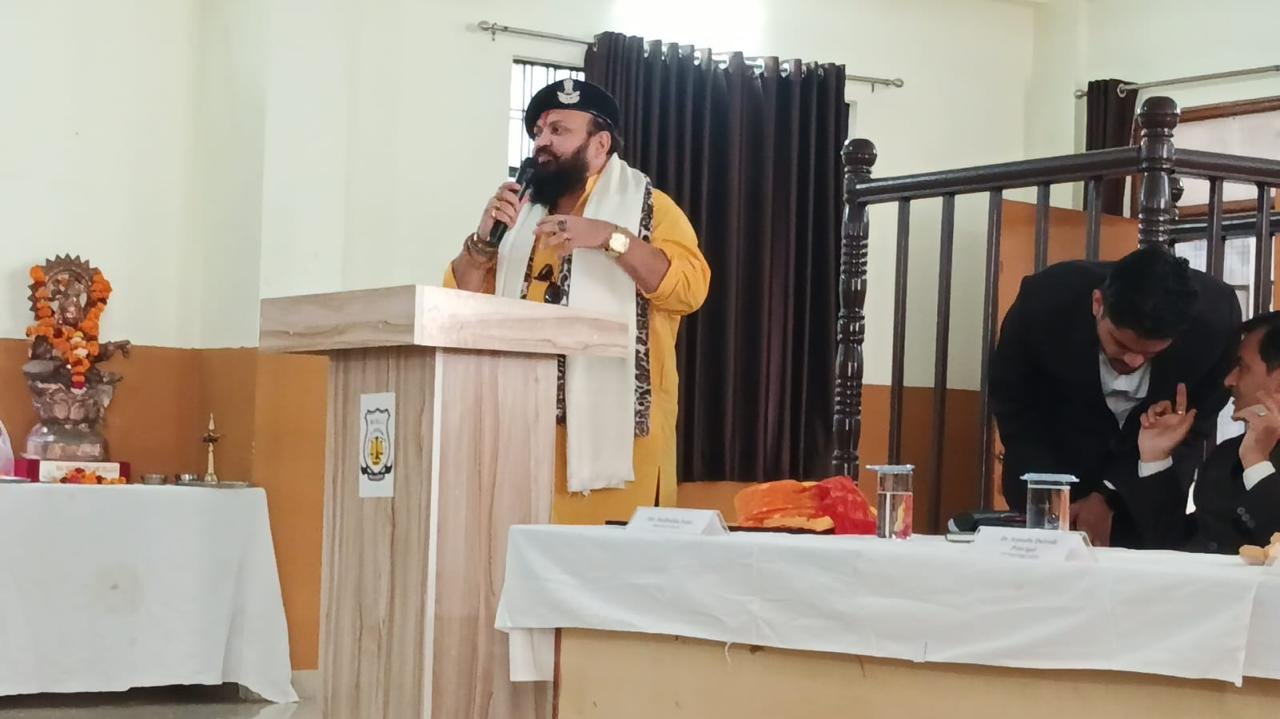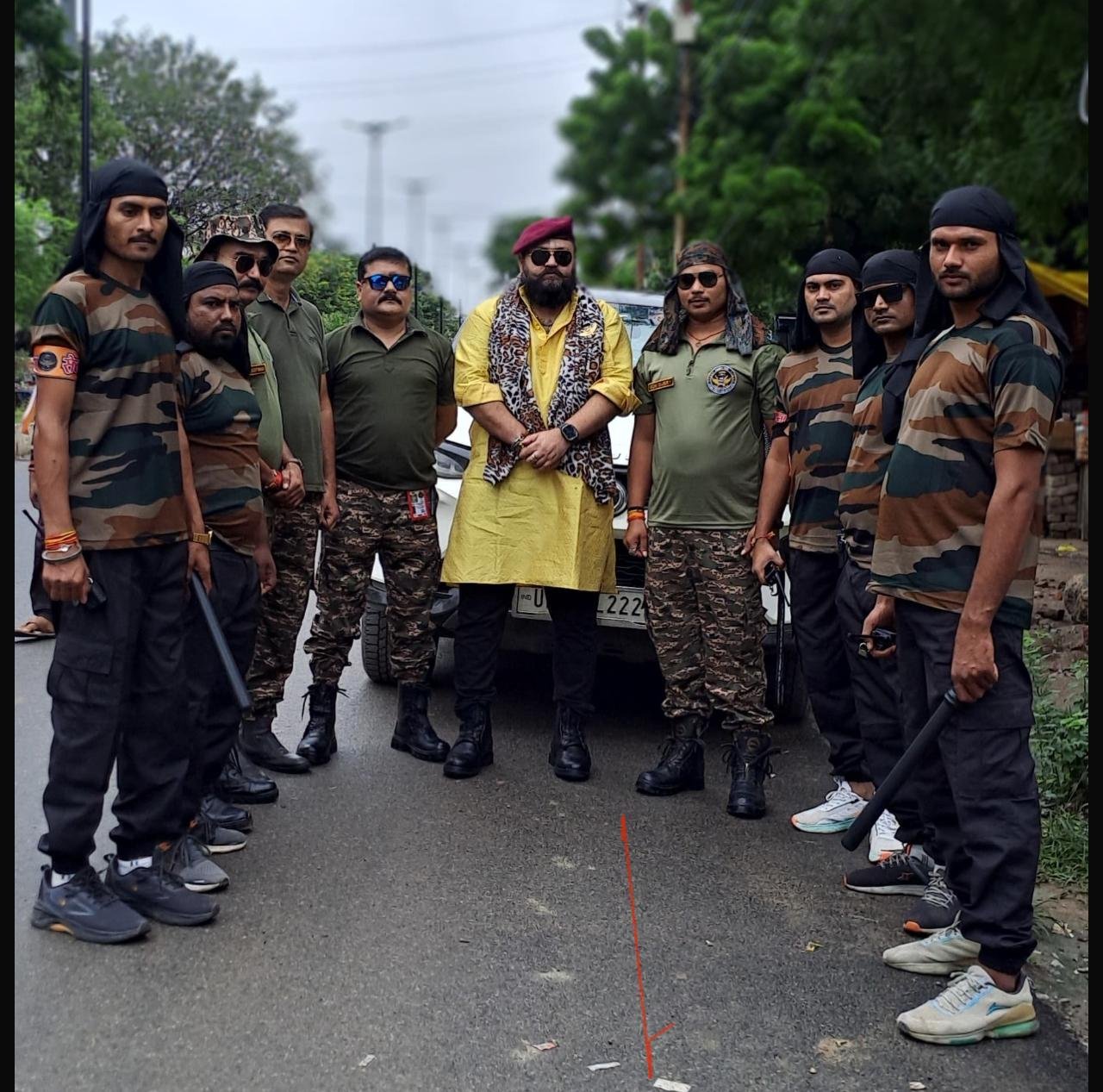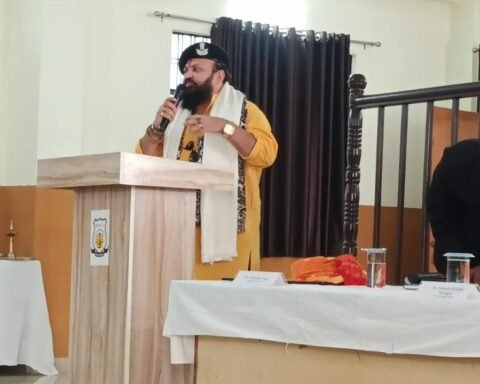28 March, Delhi – In a selective event held at the prestigious Defence Services Officers Institute (DSOI), Wing Commander Pushkal Vijay Dwivedi (R), a distinguished defence technologist and former IAF officer, unveiled and formally dedicated his brainchild — “the Vijay Code” — to the service of humanity. The event, hosted under the banner of his think-tank and innovation enterprise Garud Tactical, brought together a powerhouse of minds from the AI, cybersecurity, and global defence sectors.
A Tactical Conference with a Vision
The tactical conference titled “Cipher and Artificial Intelligence in Next-Gen Warfare” served as both a strategic forum and a symbolic occasion. In his keynote address, Wing Commander Dwivedi recounted how he innovated the Vijay Code during an ops, its use in critical military operations between 2003 and 2017, and its evolution from a battlefield cipher to a tool of cognitive and computational brilliance.
“Vijay Code was never meant to remain confined to classified channels,” he said. “It was born out of necessity, tested under pressure, and evolved with time. Today, I release it into the public domain — not as a relic of past missions, but as a foundation for future innovations in AI, security, and education.”
A Cipher Beyond Tradition
Unlike Morse Code, which served as the global standard for over a century, the Vijay Code offers a more structured, rhythmic, and AI-friendly approach to symbol encoding. Built upon only two characters — the dot (.) and the dash (-) — the Vijay Code organizes the alphabet into predictable, logical patterns.
Each group of four letters (A–D, E–H, and so on) follows progressive sequencing in symbol repetition, symmetry, and rhythm. This format offers higher pattern recognition efficiency, making it ideal for machine learning, NLP (Natural Language Processing), encryption, and human cognitive learning.
Experts noted that its simplicity makes it scalable across platforms — from voice-based AI assistants to embedded IoT defence devices, from school-level learning modules to next-gen satellite encryption systems.

Origin and Background of Vijay Code
The Vijay Code was originally conceived and deployed for use in military operations, training exercises, and real intelligence missions conducted between 2003 and 2017. Developed by Wing Commander Pushkal Vijay Dwivedi during his tenure in the Indian Air Force, this code was designed for high-stakes environments where speed, clarity, and encryption were paramount.
What distinguishes Vijay Code from historical ciphers is its origin in practical battlefield communication and AI-based defence system evaluation, rather than academic or civilian use cases. Dedicated to his mother Mrs. Vijay Lakshmi Dwivedi, he named this code on his mother’s first name ‘Vijay’.
Since 2005, Wing Commander Dwivedi had been deeply involved in evaluating AI-based defence systems, which exposed him to the limitations of conventional codes in high-complexity operational setups. Over time, the code evolved into a highly structured cipher that balances human readability with machine interpretability, making it one of the rare cipher systems with dual-domain utility.
Presence of Global Tech Leadership
The event witnessed the participation of CEOs, CTOs, and innovation heads from multinational corporations specializing in artificial intelligence, defence manufacturing, and cybersecurity.
Executives from leading firms in autonomous systems, robotics, neural network hardware, and secure communications expressed keen interest in integrating Vijay Code into signal protocols, low-power cryptographic units, and even drone swarm coordination systems.
A notable presence was a U.S.-based quantum encryption firm that praised the Vijay Code’s minimalist entropy as “a perfect pre-encryption layer to confuse classical decryption algorithms.” Indian AI startups and educational platforms also showed enthusiasm for developing learning games, encoding kits, and child-safe messaging tools using the Vijay Code.
A Cipher for the Future
The conference ended with a powerful symbolic gesture — the live decoding of a secret message using Vijay Code by a group of cadets from Garud Tactical AI Academy. The moment underscored the code’s ease of use, even for young minds.
The event also launched an international challenge inviting coders, engineers, and AI labs to create innovations using Vijay Code as a base layer — from chatbots and IoT devices to defence-grade simulators.

Vijay Code: A Strategic Cipher for AI, Security, and Cognitive Efficiency
“In a world increasingly driven by artificial intelligence, data integrity, and secure communication, the demand for adaptable, lightweight, and logically structured cipher systems has never been higher. The Vijay Code, developed by Wing Commander Pushkal Vijay Dwivedi, emerges as a uniquely efficient, AI-friendly alternative to traditional encoding systems like Morse Code. This analytical note explores the structure, logic, utility, and broader significance of Vijay Code, especially in the realms of AI algorithms, military operations, cybersecurity, and digital education.”
— Wing Commander JK Pathak (R), Director, Garud Tactical
Application in AI and Programming
The Vijay Code is not just a cipher — it’s an encoding schema that fits perfectly with AI-driven frameworks. Its simplicity allows seamless implementation in various languages like Python, C++, Java, and MicroPython, where minimal data overhead is crucial.
In AI and ML:
- Excellent for training algorithms in pattern recognition, supervised classification, and signal interpretation.
- Its low entropy structure helps in building symbolic reasoning models and lightweight language encoders.
In Software Development:
- REST APIs built with Flask or FastAPI can encode/decode Vijay Code, allowing real-time secure messaging.
- GUI applications using Tkinter make it usable in schools and training academies.
In Embedded Systems:
- Fits perfectly in resource-limited platforms like Arduino and Raspberry Pi.
- Ideal for IoT-based communication modules in military-grade field equipment.
Future Prospects
With the exponential growth of AI, cyber-physical systems, and hybrid war environments, there is a growing need for cipher systems that are both human-operable and machine-optimized. Vijay Code sits at this intersection.
Future potential includes:
- AI-powered signal decoders in battlefield environments
- Compact encryption layer for wearable tech in defence
- Educational modules for coding and encryption awareness
- Augmented Reality (AR) trainers for military cadets
Conclusion
A great feat in innovative technology by Wing Commander Pushkal Vijay Dwivedi, ‘the Vijay Code’ is more than just a cipher — it is a paradigm shift in how information can be encoded, interpreted, and taught. Its minimalistic structure, deep logic, and versatile application make it a tool of national importance — ready to serve not just in military or AI labs, but in classrooms, field units, and global data systems.
As artificial intelligence continues to redefine human capability, tools like the Vijay Code will become essential bridges between machine logic and human cognition — efficient, elegant, and made in India.





